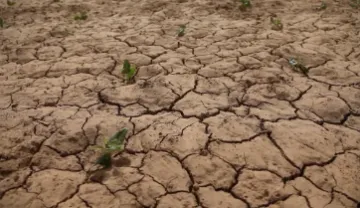The Sahel: climate change, (in)security and migrations

What role does climate change play in the Sahel’s current instability? What are the best climate emergency adaptation strategies to promote in the area? What role does Europe play in the Central Sahel’s climate resilience, and what role could it play in the future? These are some of the questions examined by the study “Climate change and resilience in the Central Sahel” led by CIDOB in collaboration with the European Centre for Development Policy Management (ECDPM) and the German think tank Adelphi. The study, which has analysed the impact of climate change in this vulnerable region for a year and a half, is part of the CASCADES project studying the cascading effects of climate change and how they may affect Europe. CASCADES, in which 12 European research centres participate, is funded by the European Union’s H2020 research and innovation programme.
The Central Sahel region – Niger, Mali and Burkina Faso – will face significant climatic variations in the coming decades. Different models give different projections but the general consensus is that temperatures will rise 1.5 times faster than the global average between now and 2030, rainfall will vary more in time and space and extreme events will increase, with droughts and heavy rains, for example, potentially becoming more frequent and severe. This would disrupt agricultural and pastoral production – the area’s main economic activities – and harm vulnerable rural communities, especially women and historically excluded groups.
The effects of climate change on rainfall and transhumance patternscould also affect increasingly evident intercommunal tensions. Conflicts could worsen if systems of prevention, management and resource redistribution fail. Economic losses caused by climate and food insecurity, community tensions and the discrediting of institutions could indirectly benefit armed groups by facilitating recruitment among excluded communities. However, the research indicates that climate change is unlikely to directly cause the proliferation of armed groups in thearea. “Other factors such as foreign military interventions, religious tensions and the marginalisation of pastoralist communities are likely to be more important”, according to Oriol Puig, a CIDOB researcher working on the CASCADES project.
Mobility is an important strategy for economic diversification in the Sahel. Climate change could lead to more forced displacement, increase migration from the countryside to the city and even intensify regional migration. However, migration to other African countries would far exceed that to Europe. Certain populations would also be trapped because they lack the means with which to move.
Climate change and resilience in the Sahel
The likelihood and severity of the climate impacts in the region will depend on the evolution of the socioeconomic and political conditions that determine vulnerability and resilience. Among the key factors to consider are agricultural productivity, the existence of effective and inclusive institutions, the improvement of infrastructure and the promotion of efficient systems for managing resources and conflicts. Meanwhile, economic opportunities, social relations and adaptation measures in general – which are influenced by the geostrategic policies and interests of the EU and other global actors – are essential to understanding whether the region will suffer increased desertification or whether, among other effects, the re-greening noted in recent decades will be consolidated.
Adapting to climate change must take more and better advantage of the complementarity between agriculture and grazing and promote more small-scale initiatives, as the study points out. As increased soil productivity is a priority, more widespread use of climate-adapted seeds should be promoted as well as taking advantage of local techniques and land conservation knowhow. Transhumance corridors must be better defined and the historical exclusion of mobile communities addressed. Similarly, it is necessary to improve meteorological information and warning systems and facilitate their dissemination. As for existing initiatives and approaches, such as the Great Green Wall Initiative and Climate-Smart Agriculture, they need to be better adapted to local needs and promote ownership.
Sahelian countries’ national policies increasingly consider risks related to climate change. Regional cooperation within well-established organisations like ECOWAS (Economic Community of West African States) is a crucial factor in responding to climate impacts. However, measures to promote resilience and adaptation find themselves limited by resource availability, fragmentation between different initiatives and chronic dependence at the international level.
Europe's role in the Central Sahel’s climate resilience
The migration containment policies promoted by the EU should be relaxed, the study concludes, because they aggravate tensions and conflicts by hindering livelihoods such as transhumance and preventing the mobility that is an important strategy for dealing with the consequences of global warming. The ECOWAS protocols on free movement should be applied, rather than prioritising bilateral agreements to curb migration, such as those between the EU institutions and Niger.
Security and peacebuilding strategies must be redefined to prioritise human rights instead of the militarised approaches favoured to date. A degree of fatigue in European and above all Sahelian societies with regard to military interventions in the area, which the experts surveyed also believe to be counterproductive, obliges us to reconsider the weight given to military considerations and emphasise development and local needs. “This requires monitoring, recognition and accountability of the human rights abuses committed so far" says CIDOB researcher Oriol Puig.
The study “Climate change and resilience in the Central Sahel” is part of the CASCADES project, and is based on a combination of quantitative and qualitative methods such as an online survey of more than 200 experts from the region, 38 semi-structured interviews with experts and the heads of international and local organisations, a quantitative analysis of historical data and future climate impact projections, and a participatory scenario planningexercise involving regional specialists.
>> Access the Report: Climate Change, Development and Security in the Central Sahel